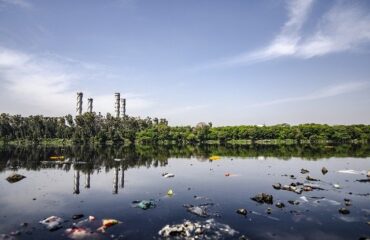It is well known that ice formation begins when the outflow of heat into the atmosphere from the surface of a body of water exceeds its inflow to it from the deep layers. The heat deficit formed in this case is compensated by the heat of crystallization during the transition of water from liquid to solid state. Obviously, everywhere where the annual heat loss of the ocean exceeds the amount of solar energy entering it, the necessary prerequisites for sea ice formation are created in winter. These conditions are met by the so-called energy sink areas, which cover not only the polar regions, but also significant parts of temperate latitudes in both hemispheres.
However, the prerequisites for the formation of sea ice available in the energy flow areas are not realized in all cases. Suffice it to point out, for example, the North European basin, which is completely located in the energy drainage area, but which is not frozen in most of its part. The reason for this is that, in addition to the heat accumulated annually in this basin, advective heat, concentrated below the active layer and continuously replenished by currents, takes part in the energy exchange with the atmosphere. When this heat gets unobstructed access to the ocean surface, no ice is formed. When this condition is not met and the advection heat export is impossible or weakened to the extent that it cannot fully compensate for the heat outflow into the atmosphere, ice formation becomes inevitable. In other words, the existence of an ice or ice-free regime in regions of energy combustion depends on the degree of participation of advective heat in the energy exchange with the atmosphere.
The role that advective heat plays in maintaining the ice-free regime in energy flow areas makes it necessary to elucidate the factors governing its transport to the ocean surface. After all, in many cases, the currents that transport heat toward the poles propagate at depth and have no direct contact with the atmosphere.
Vertical heat transfer in the ocean is known to take place through mixing. Its intensity depends on the stability of water layers, and the latter in the polar regions depends mainly on the vertical salinity gradient. When this gradient is significant, vertical heat exchange is weakened. Large vertical salinity gradients are characteristic of the halocline, which forms near the ocean surface at the boundary of desalinated polar and underlying saline waters. By sharply attenuating vertical exchange, the halocline acts as a shield for heat fluxes to the ocean surface from below. As a result, the flow of heat from the water may not be able to compensate for its outflow from the surface into the atmosphere, and ice formation becomes inevitable. Thus, the formation of the halocline creates conditions in the deep ocean for ice formation and transition to an ice-free regime, while its degeneration creates conditions for transition to an ice-free regime.







